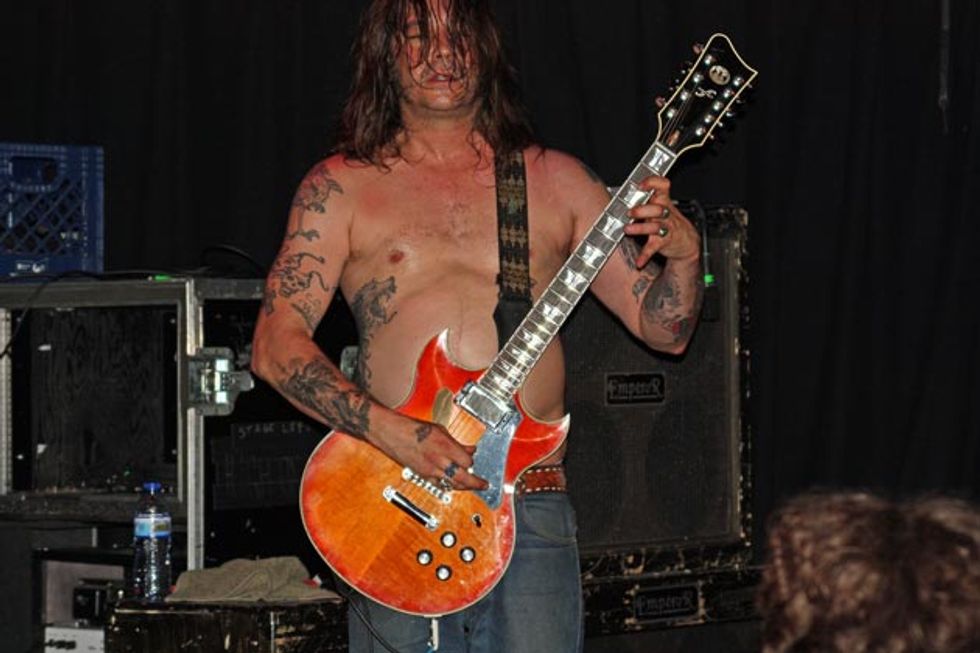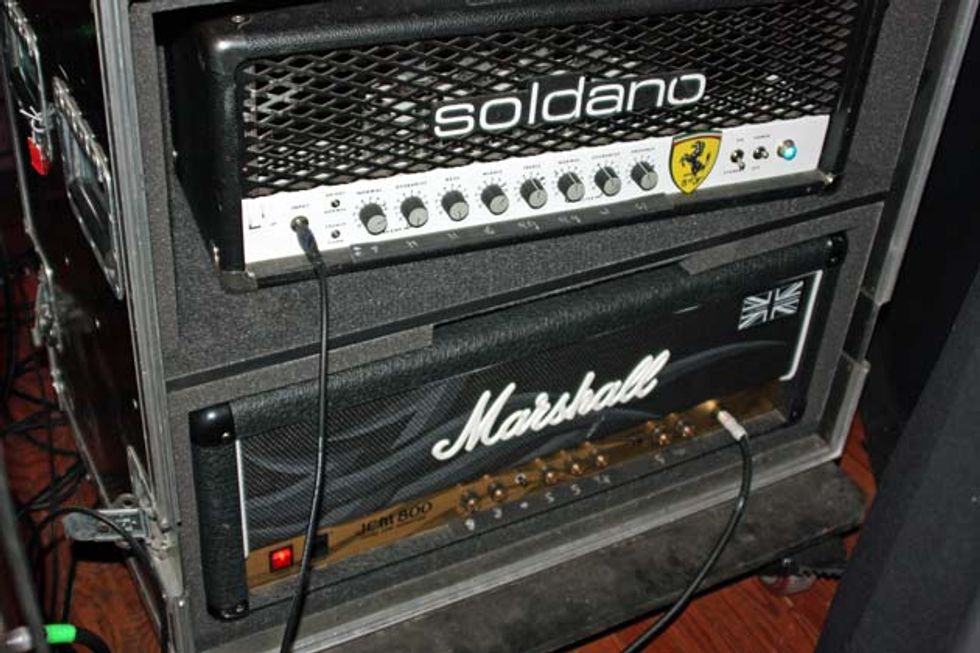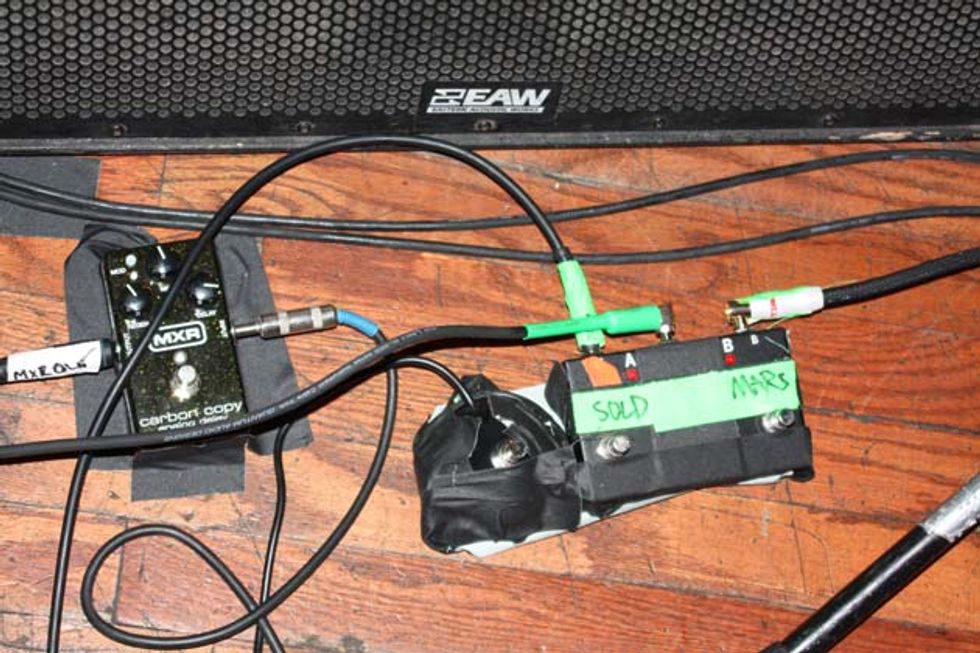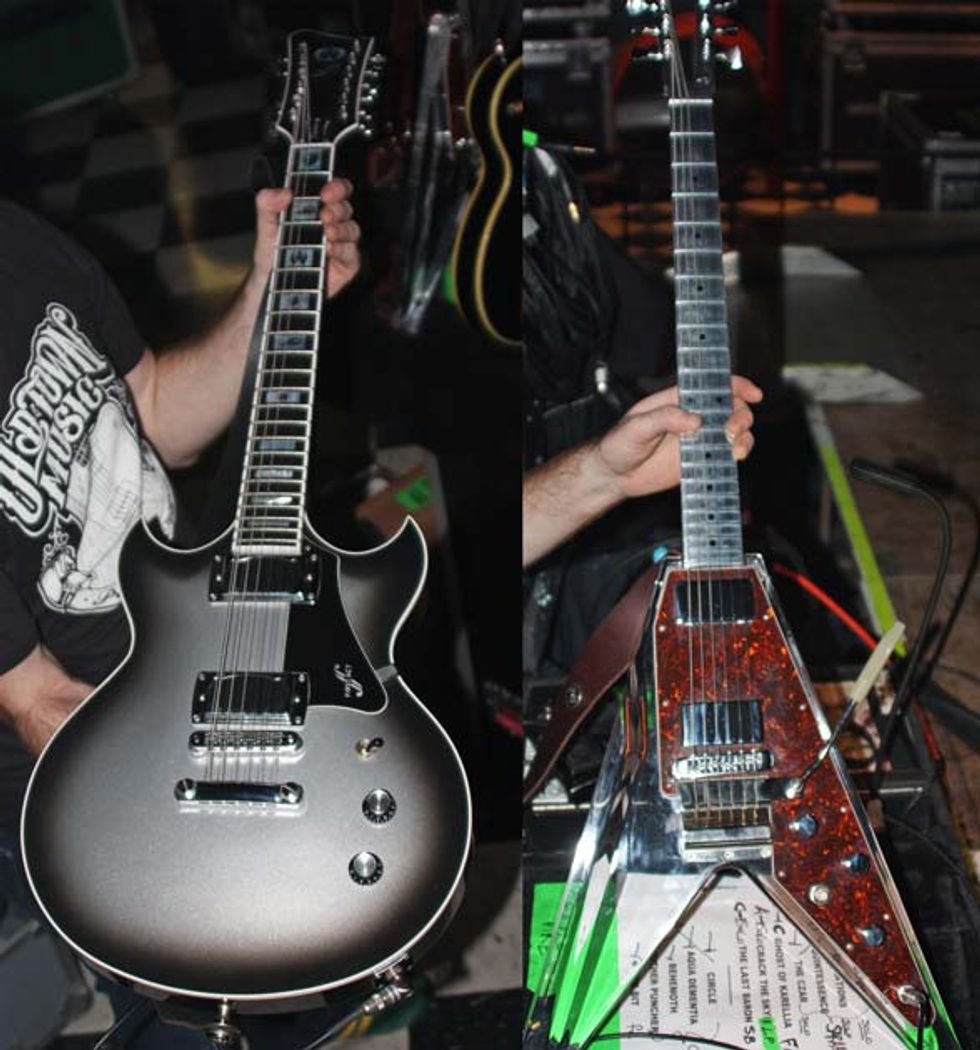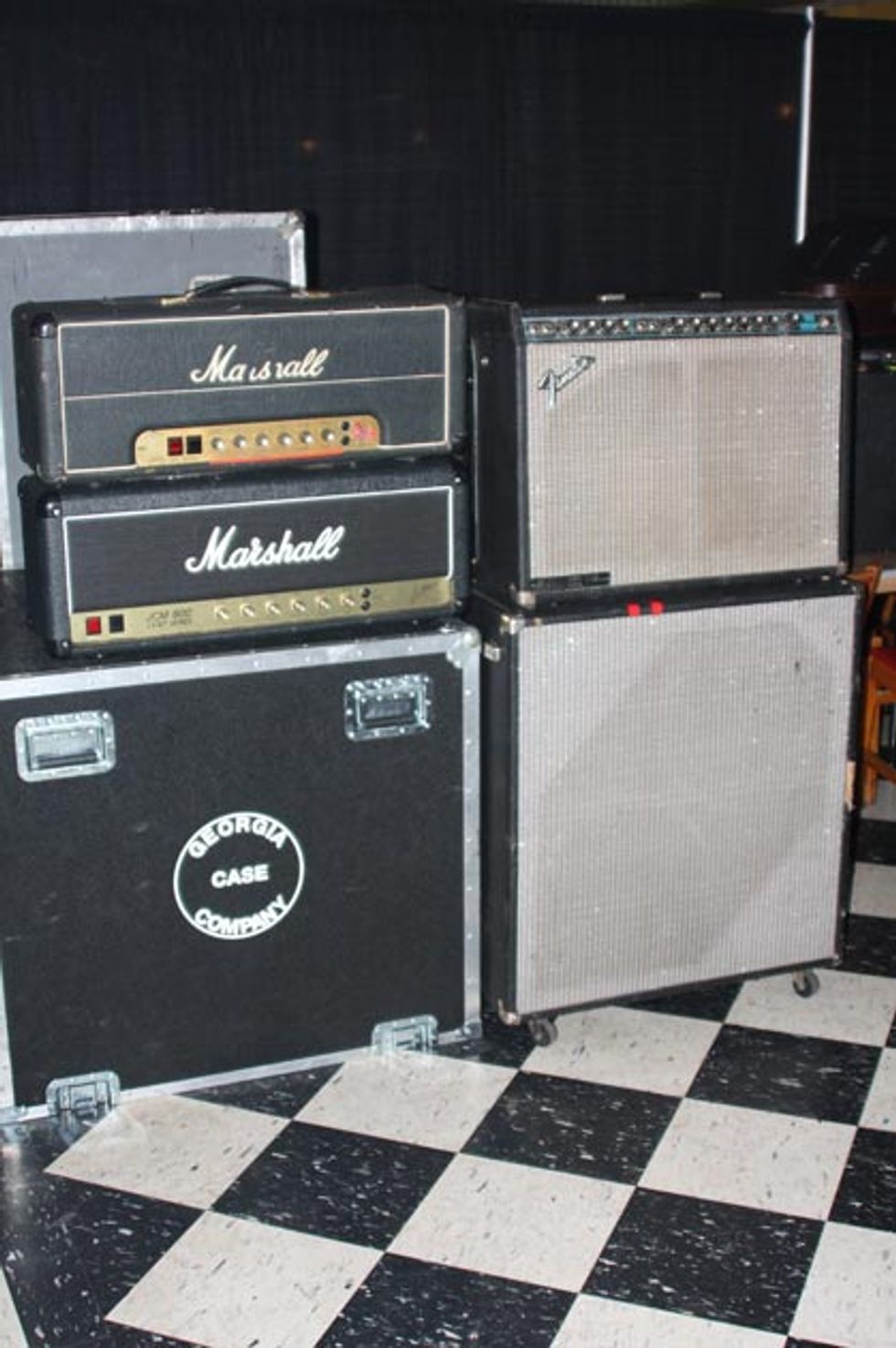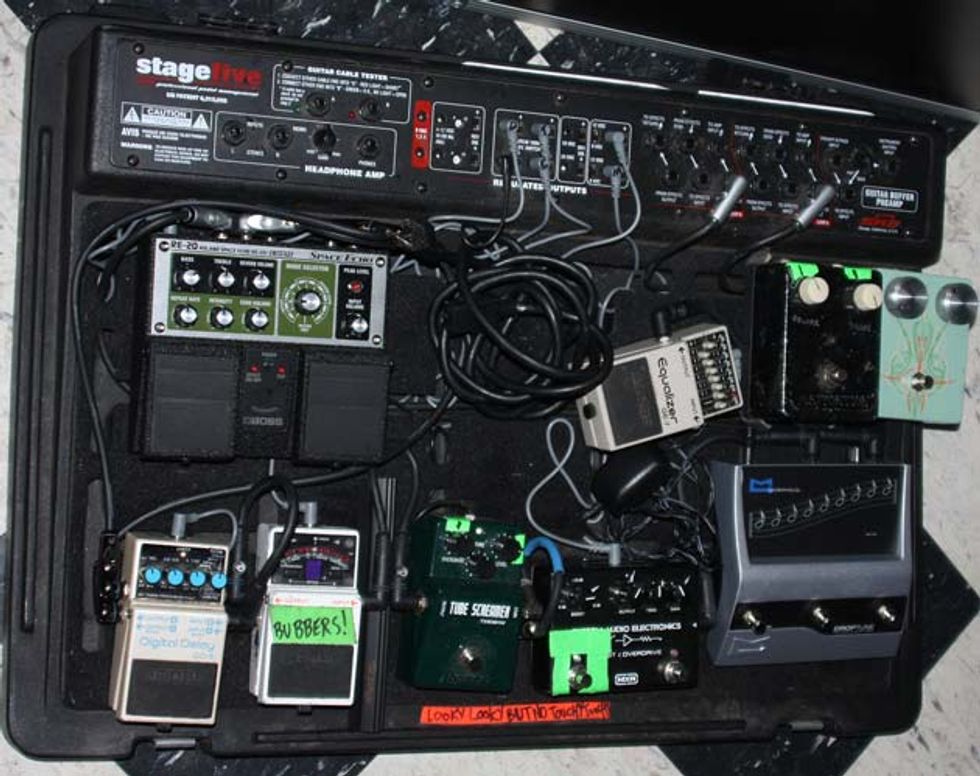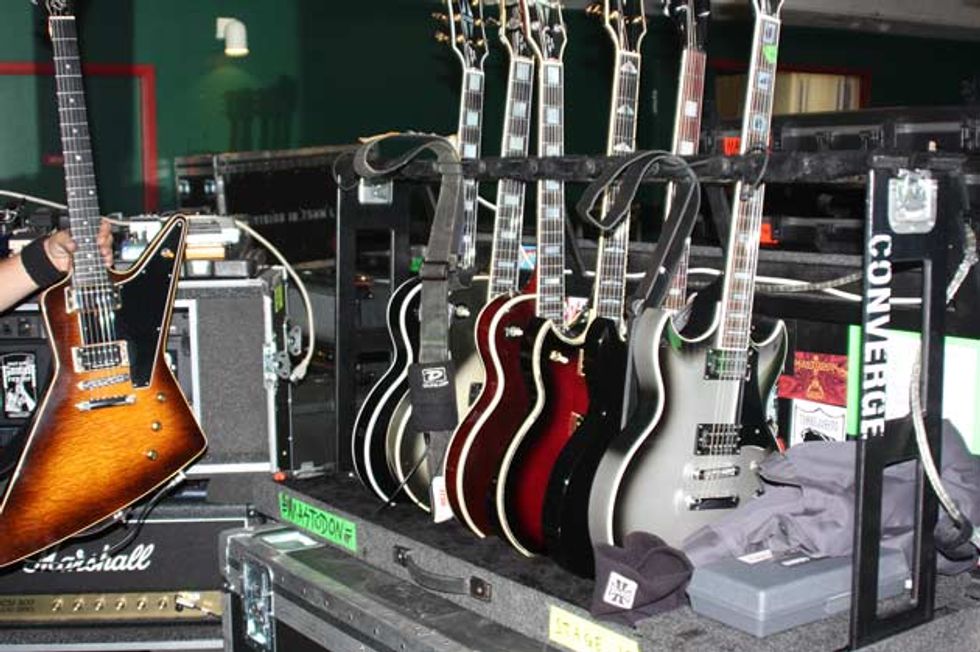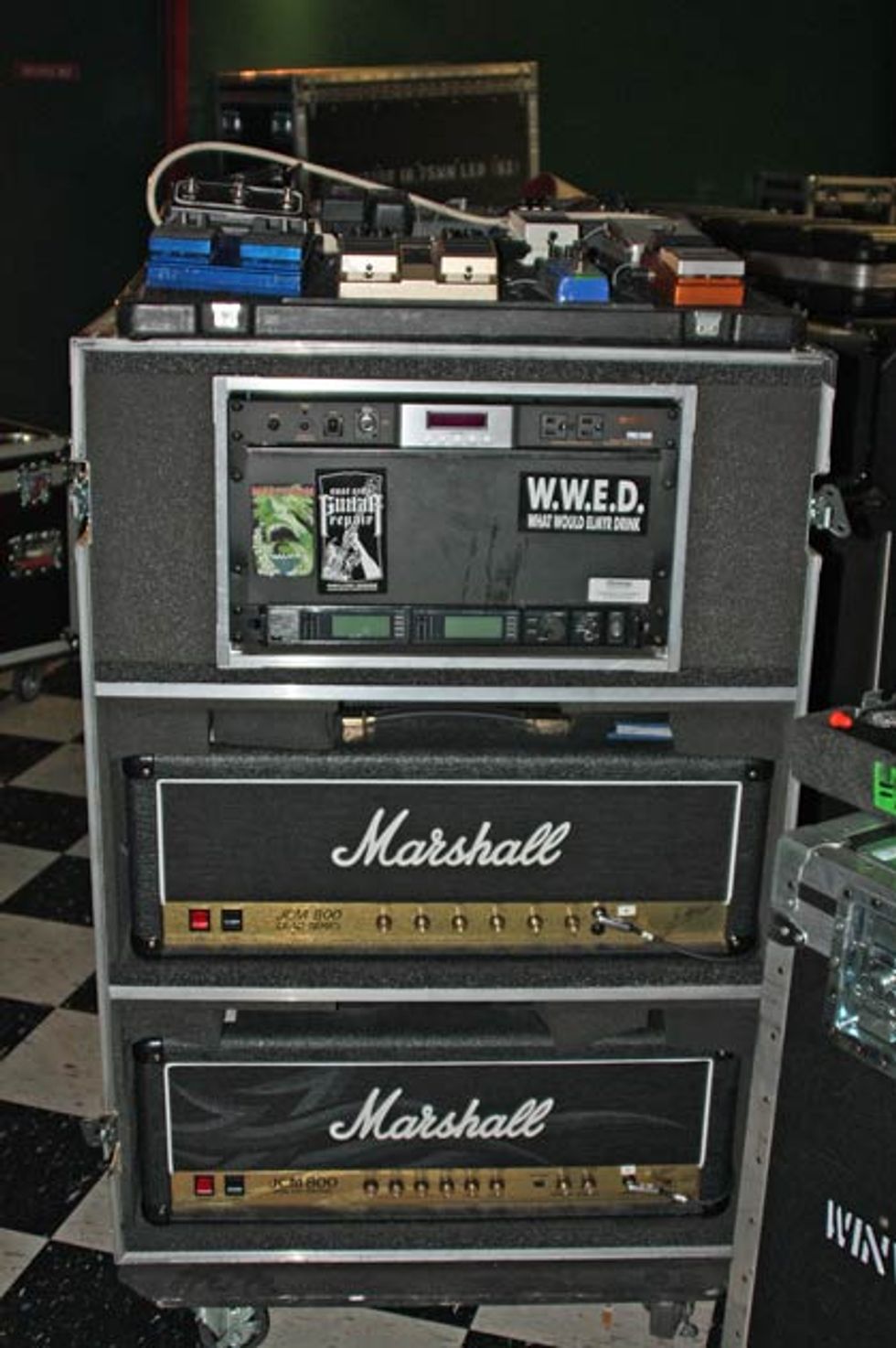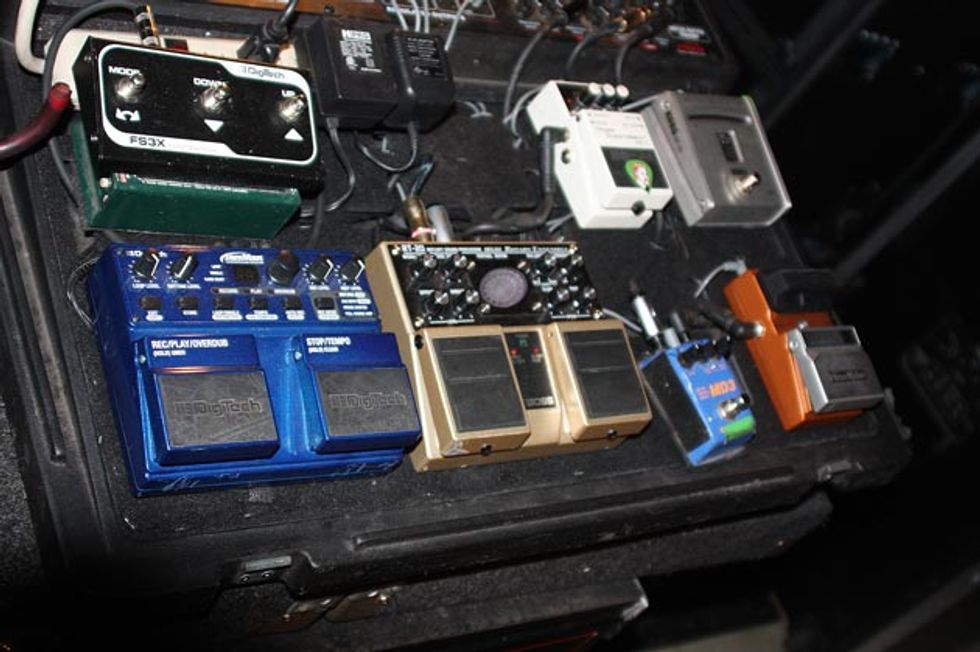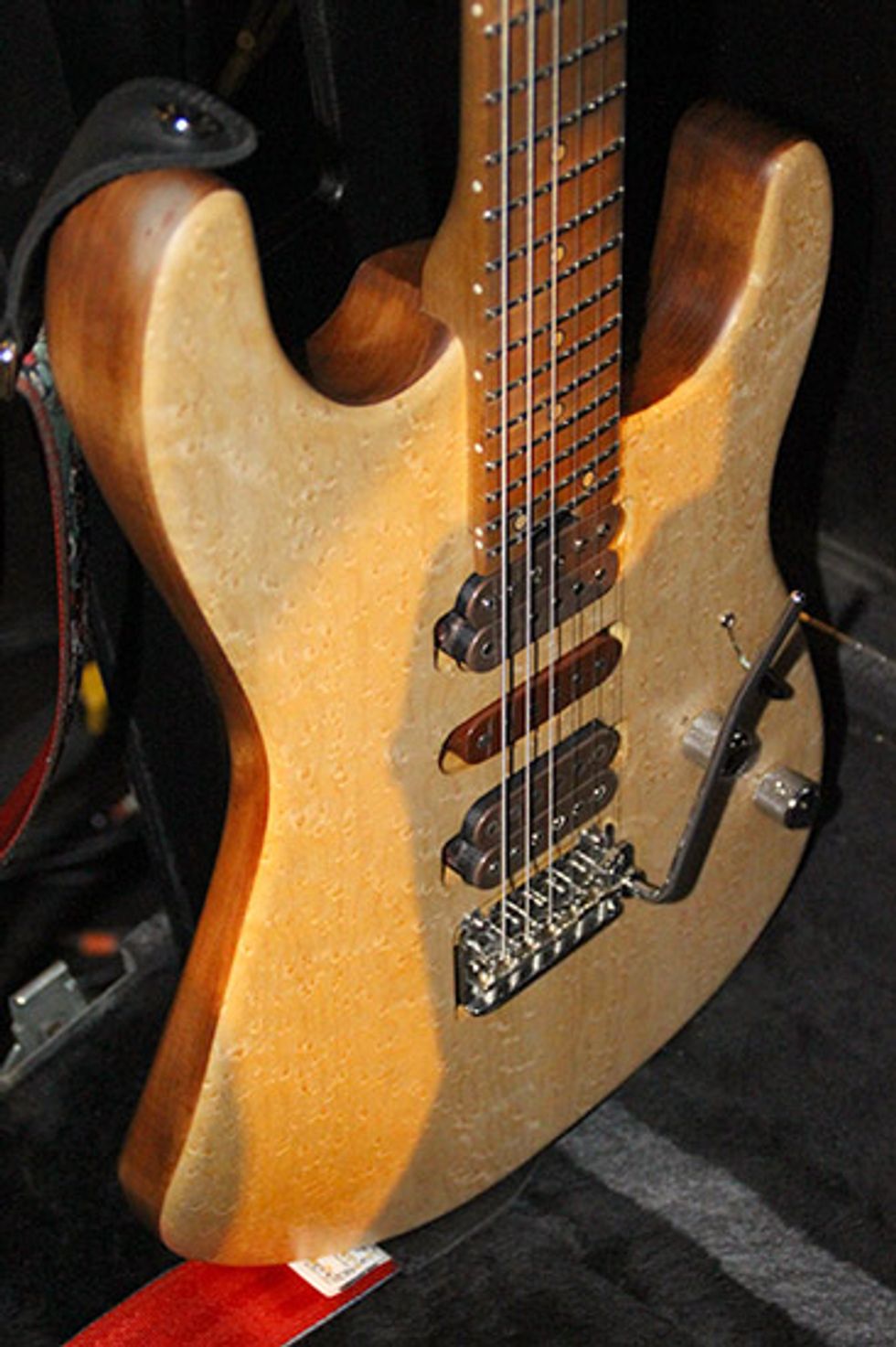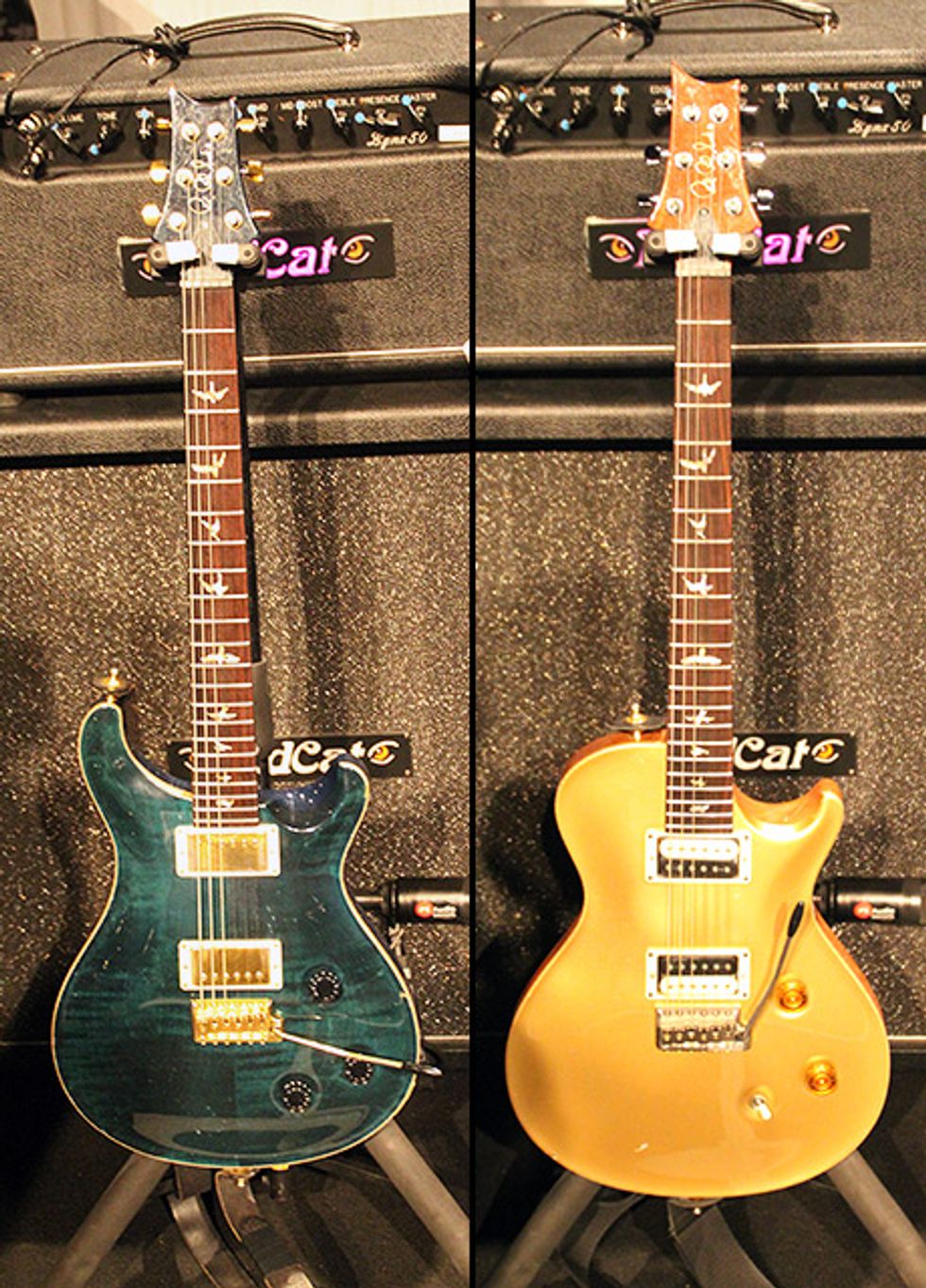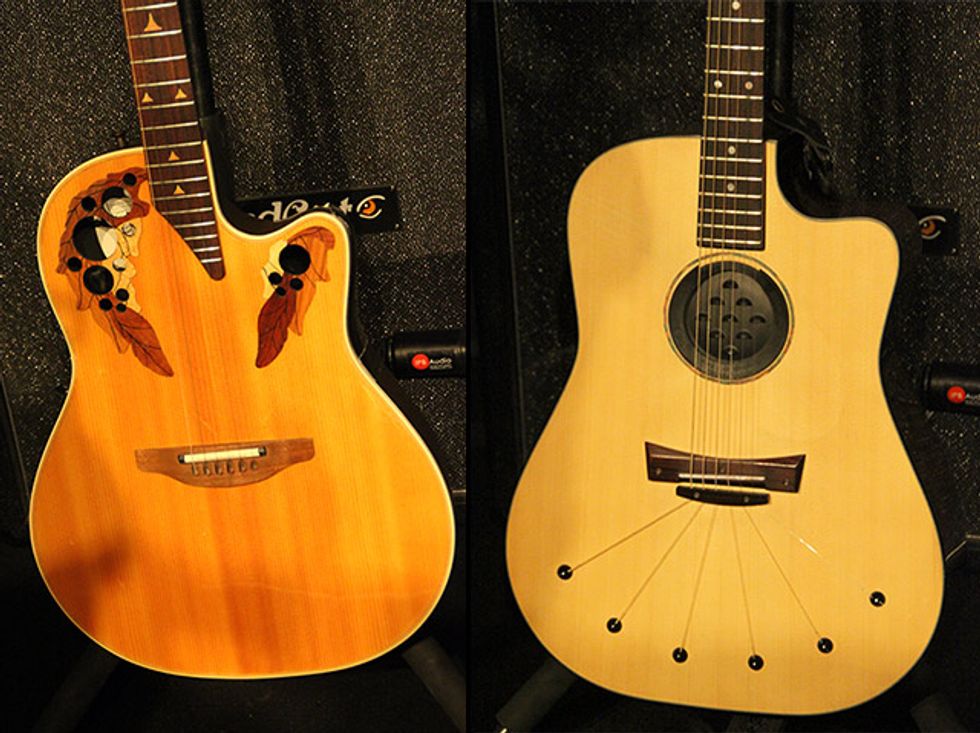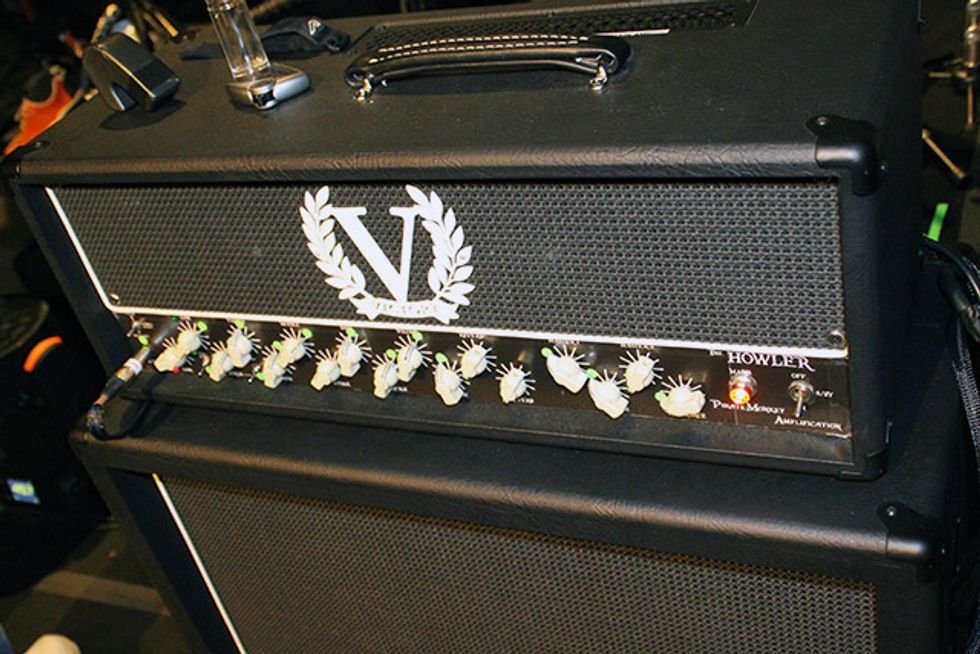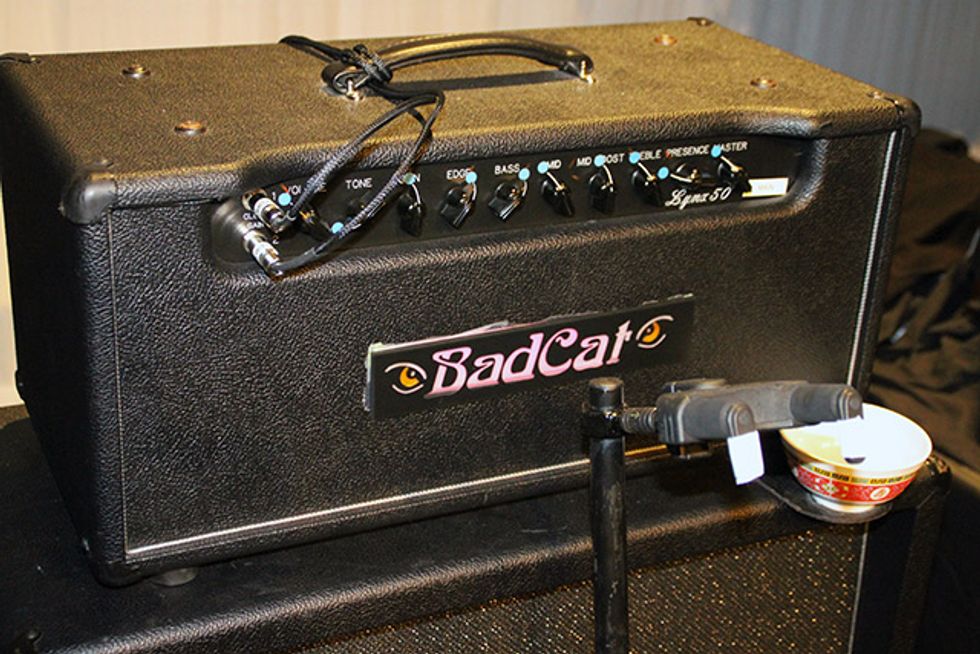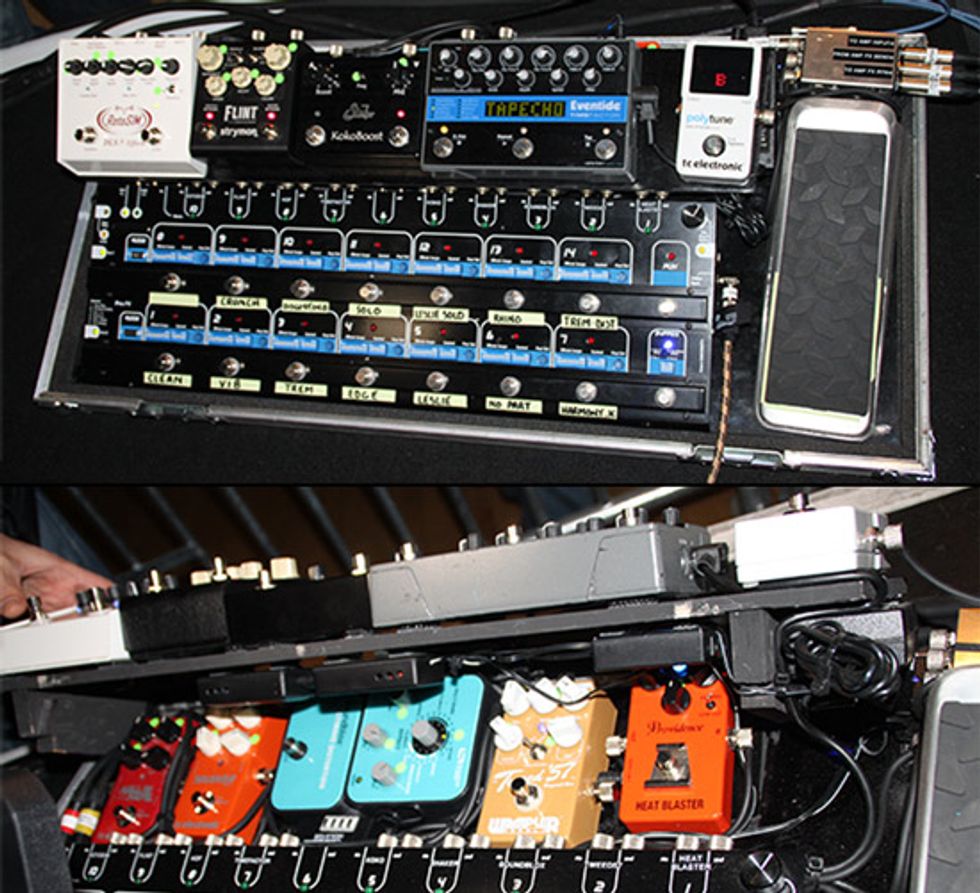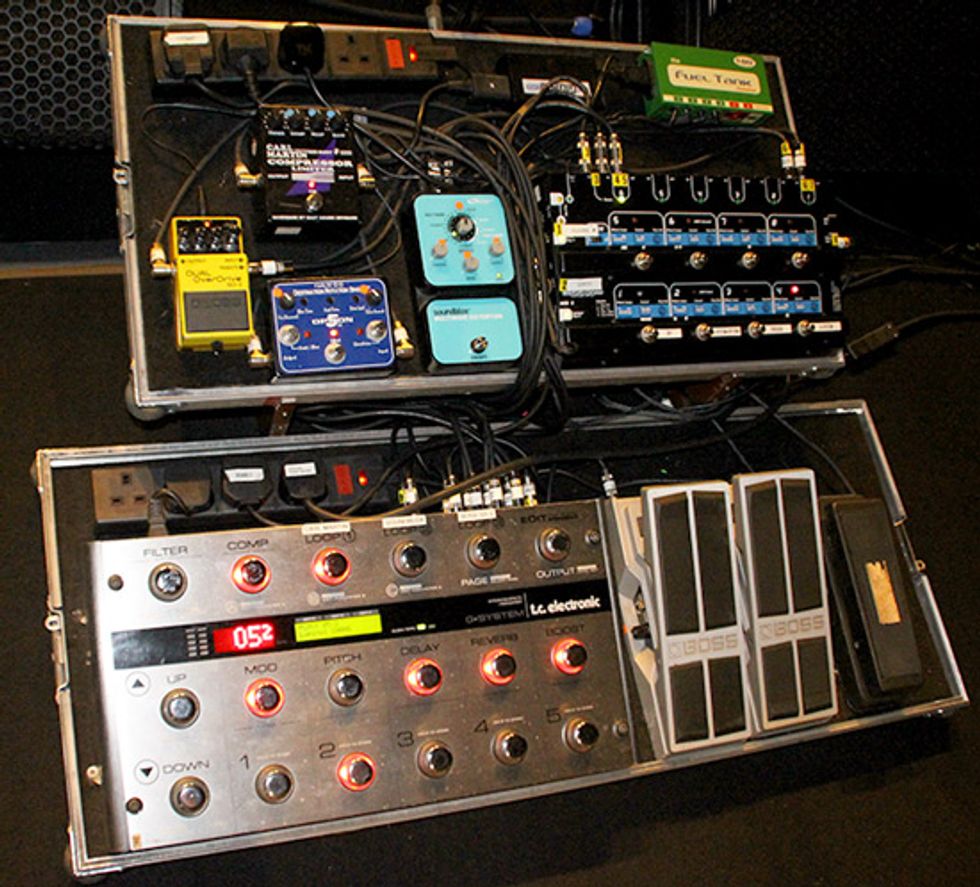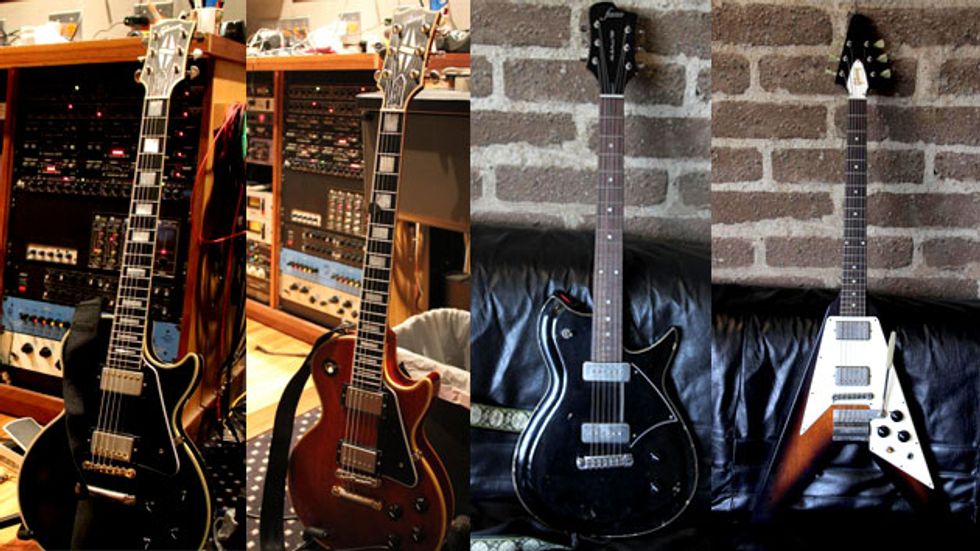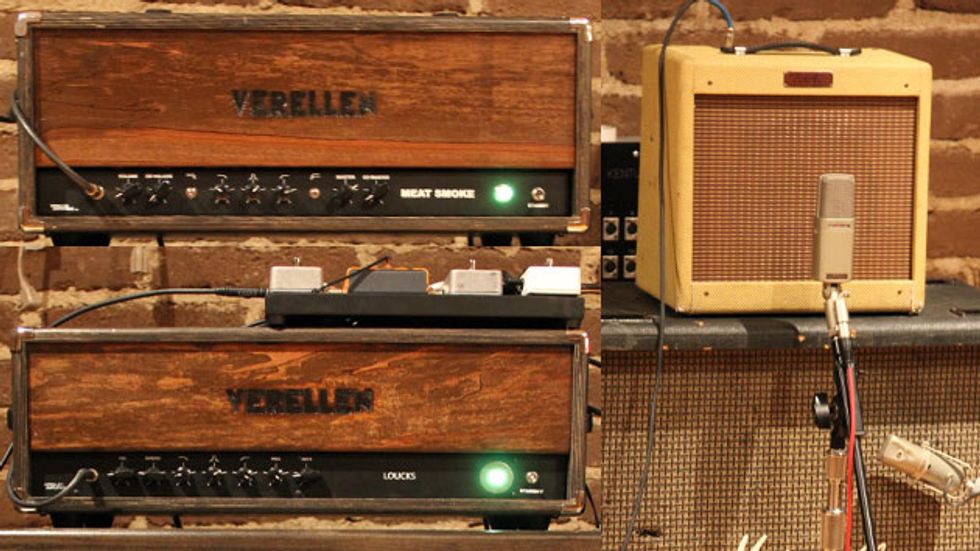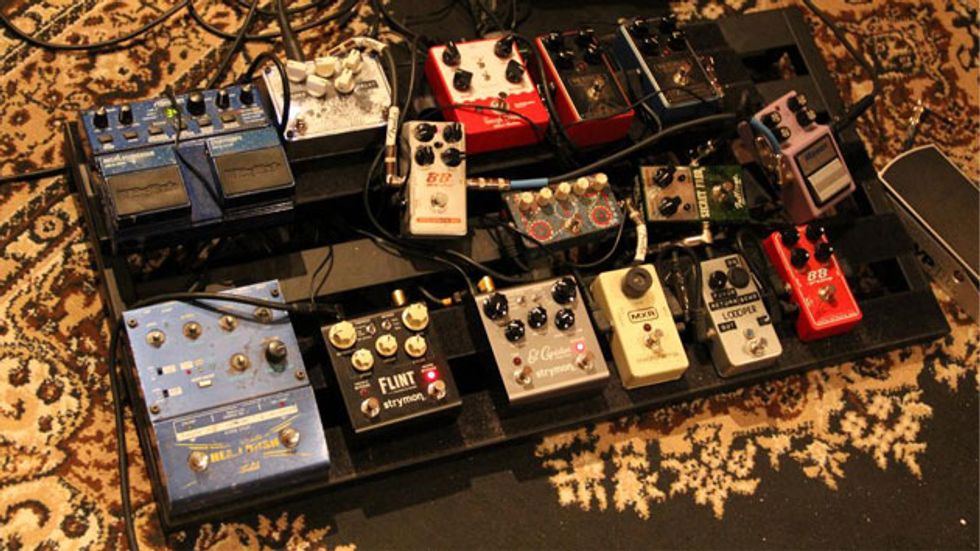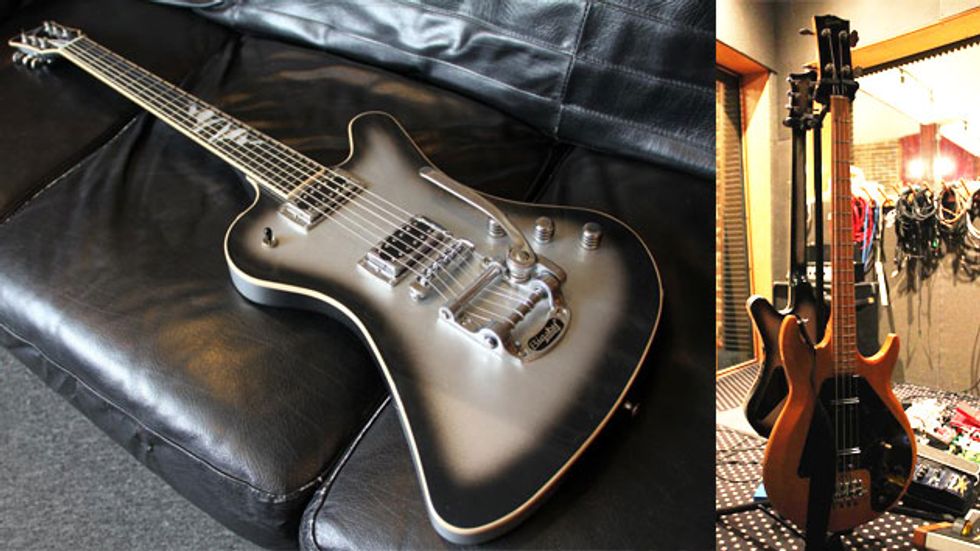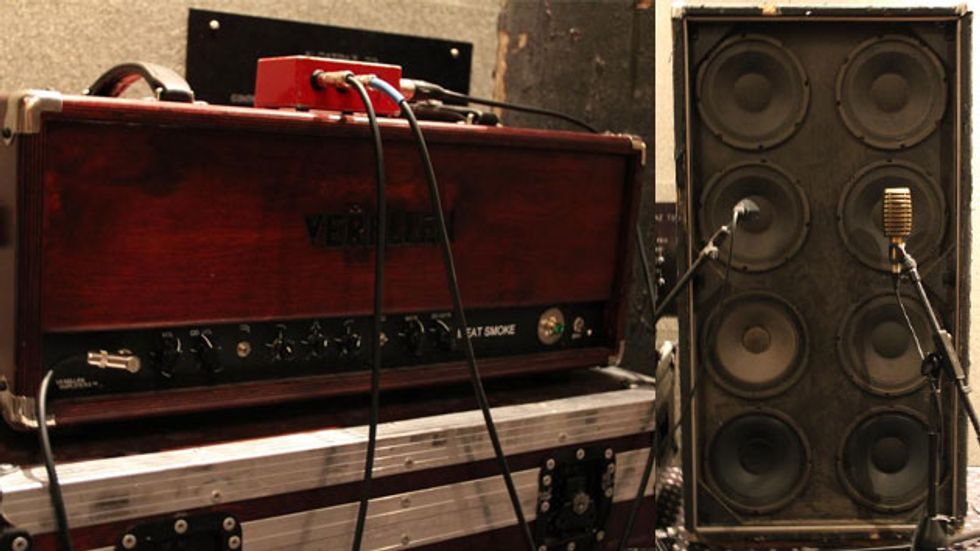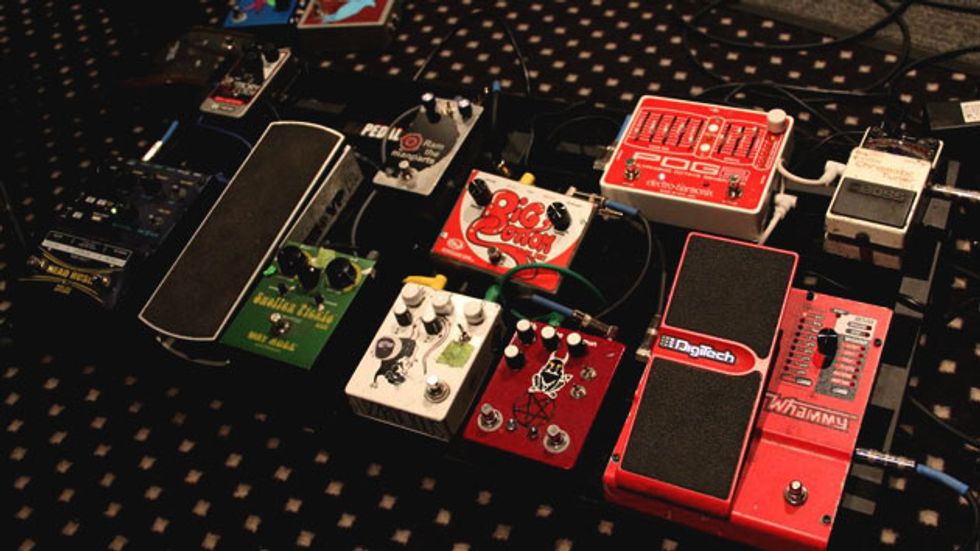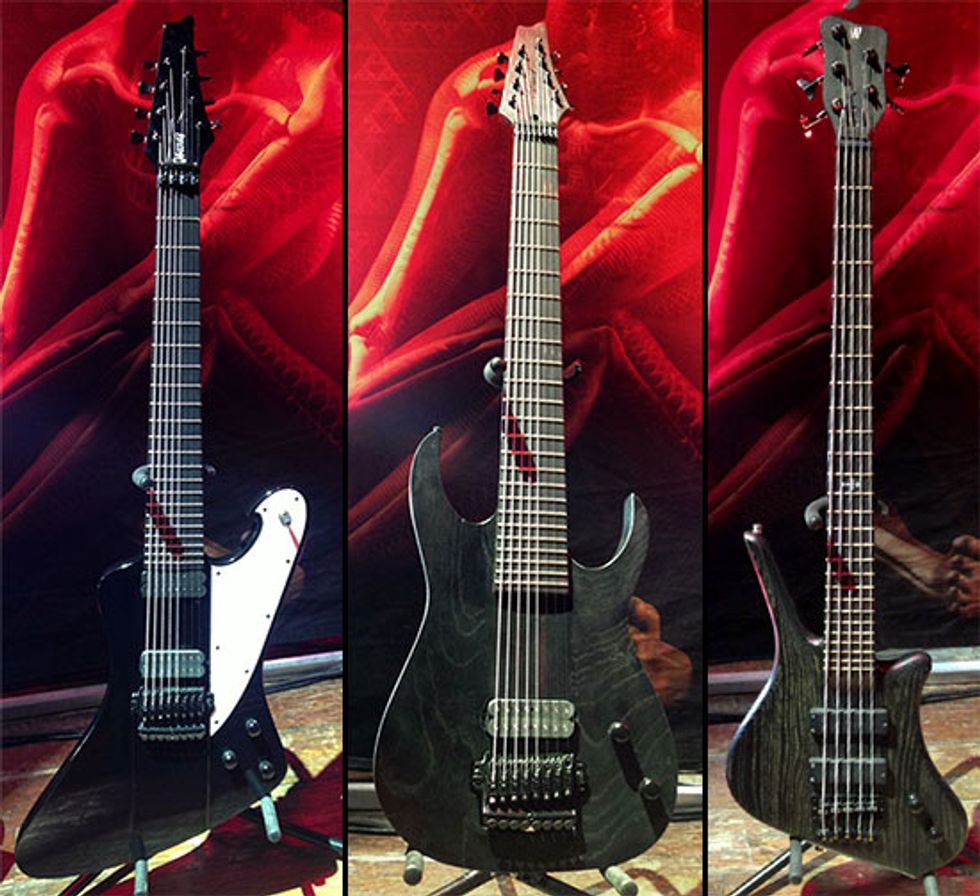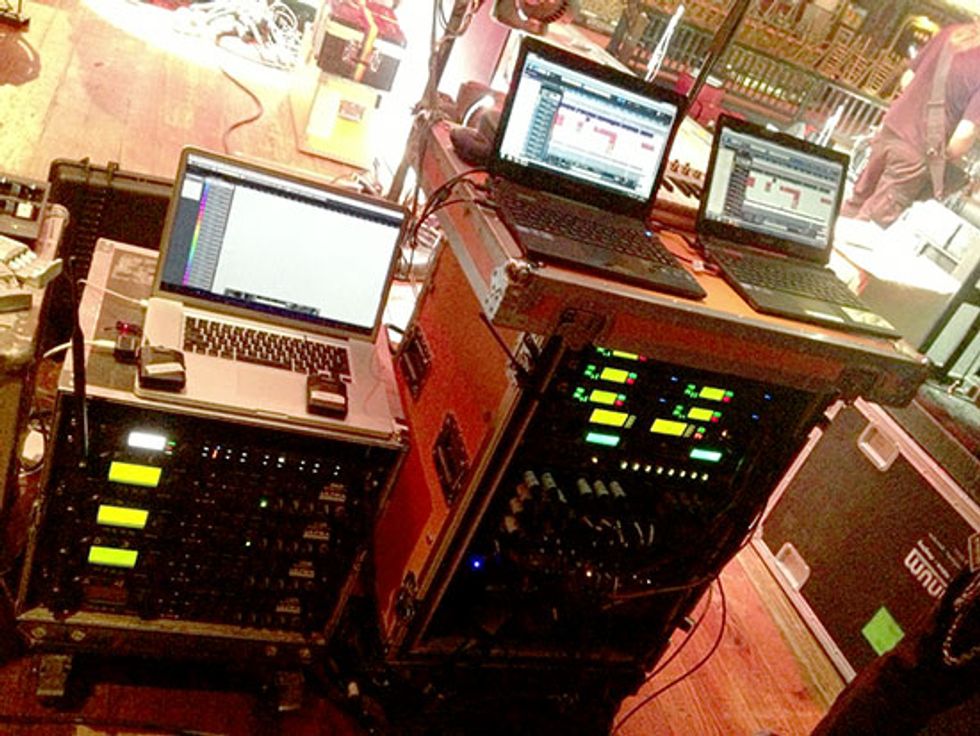We dig deep into our vault to bring you the gear from five boundary-pushing heavy hitters.
Since the days of Black Sabbath and Deep Purple, hard rock and metal have splintered in countless boundary-pushing ways—and the evolution includes the ways in which they use gear. Here we've assembled highlights from our Rig Rundowns with some of today's most interesting purveyors of extreme music—from the shirtless experimentations of High on Fire's Matt Pike to the crushing prog-rock virtuosity of Steven Wilson and Guthrie Govan. After whetting your appetite with the photos, details, and videos, be sure to visit here to dive in and watch more Rig Rundown clips.
Click below or go straight to your fave:
High on Fire's Matt Pike
Mastodon's Brent Hinds and Bill Kelliher
Steven Wilson & Guthrie Govan
Russian Circles' Mike Sullivan & Brian Cook
Meshuggah's Fredrik Thordendal, Mårten Hagström, & Dick Lövgren
High on Fire's Matt Pike
As seen in one of our earliest Rig Rundown clips, Matt Pike keeps things stupid simple—as in not being bothered to wear a shirt onstage … ever. His setup consists of a custom 9-string First Act solidbody that’s designed after Santana’s Yamaha SG-style guitar and is 1" thicker than a Les Paul. During High on Fire shows, the 9-string is set in what Pike coins as “man tuning” or C-F-A#-D#-D#-G-G-C-C.
He runs that beast through a Soldano SLO and Marshall Kerry King 2203KFK JCM800. The Soldano is the main amp behind his live sound, but for the band’s aggro-sludgy parts or Pike’s solos, he adds the Marshall for extra dirt and volume. Both amps power three or four—depending on the venue’s size—Emperor 4x12 cabs.
Besides a Boss TU-2, the only pedal he stomps on is an MXR Carbon Copy.
Mastodon's Brent Hinds & Bill Kelliher
Brent Hinds' Gear
During the band’s tour supporting the critically acclaimed Crack the Skye, Brent Hinds mainly used his custom acrylic Flying V-style axe built by Kevin Burkett of Electrical Guitar Company. For quieter and ethereal passages in songs like “The Ghost of Karelia,” he would often use his First Act Custom Shop Lola 12-string because the doubled octave strings “create a ringing, atonal chorus not matched by a pedal.”
His two-amp rig included a ’76 silverface Fender Twin Reverb—that also powered a 2x15 extension cab—and a ’76 Marshall JMP MKII Lead Series through two Marshall 4x12s.
His stomp station had a Monster Effects Mastortion—used to push his amps to the brink of destruction—a Roland RE-20 Space Echo, an Ibanez Tube Screamer TS9, a Boss DD-6 Digital Delay, a Boss GE-7 Equalizer, a Morpheus DropTune, and a Boss TU-2 Tuner.
Bill Kelliher's Gear
“The older the better—especially with Les Pauls and Explorers,” smirks Kelliher in this Rig Rundown clip. During Mastodon’s 2009 U.S. run, he used a bevy of ’70s and early ’80s LPs and Explorers, in addition, he grappled with a silverburst First Act Custom Shop 9-string for “Ghost of Karelia.”
For his two-amp lineup, Kelliher went with a ’80s Marshall JCM800 and a Marshall Kerry King 2203KFK JCM800, the latter of which has KT88 tubes that crank out “a chunkier, fatter, heavier sound than the standard JCM800.” The heads blast through two Mills Acoustics 4x12s loaded with Celestion Vintage 30s and a Marshall 4x12 equipped with 75-watt Celestions.
Like Hinds, Kelliher keeps a tidy board of essential boxes like a Boss RT-20 Rotary Ensemble Sound Processor “that emulates rotary speaker sounds for some clean stuff,” a DigiTech JamMan Looper, a Boss NS-2 Noise Suppressor, a Guyatone MD-3 Micro Delay, a HardWire SC-2 Valve Distortion (which replaced his beloved Ibanez Tube King because of the fragility of the 12AX7 tube on the road), and a Korg DT-10 Chromatic Tuner.
Steven Wilson & Guthrie Govan
Guitars
Govan's main axe is a prototype Charvel with a basswood body and a maple top. It's outfitted with pickups made by Michael Frank-Braun. The neck is made of roasted birdseye maple with a pair of graphite truss rods that make it "hilariously stable."
For the Steven Wilson show, Govan also brings along a Fender Select Jazzmaster HH (the strap boasting his original McDonalds name tag), and a Vigier Excalibur fretless guitar. The Vigier is used on "Insurgentes" to imitate a bass koto.
Steven Wilson's main guitar is a PRS single cut in standard tuning. He also has a Custom 24 tuned to Drop-D. On the acoustic side of things he uses a Babicz tuned to standard and an Ovation in "Nashville" tuning.
Amps
Normally Govan is a fan of EL34-powered amps, but for his gigs with Wilson he has been using a 6L6-flavored Victory Howler. Designed by Martin Kidd, formerly of Cornford, the Howler is a prototype 100-watt head that is powered down to 50-watts.
Wilson plugs into a Bad Cat Lynx 50 head with matching cab. One important feature for Wilson is that both channels are simultaneously active, meaning he can blend in each channel through his TC Electronic G-System.
Pedals
Due to the amount of tones Govan needs to cover in Steven Wilson's band, he had to create an entirely new pedalboard. Designed by Daniel Steinhardt from TheGigRig.com, the system is based around their MIDI-14 switching system. Rather than assign each pedal a dedicated switch, Govan has 14 different combinations to cover the sounds needed for a particular show.
The main guts of Wilson's pedalboard is a TC Electronic G-System, which has patches programmed for each song of the setlist. Each loop in the G-System is tied into a pedal to allow Wilson to add effects on the fly. For controlling the G-System along with the amp, both are looped through his The Gig Rig MIDI-8 controller.
Russian Circles' Mike Sullivan & Brian Cook
Mike Sullivan's Gear
Guitars
Guitarist Mike Sullivan is a life-long fan of Gibson guitars, and gravitates towards the thick and powerful humbucking tone that a Les Paul Custom brings to the table. “There’s just something about a the ebony fretboard and mahogany body of a Les Paul Custom that really just gets the most out of each note, sustain-wise with clarity,” explains Sullivan. His two main axes are a pair of Gibson 1957 Les Paul Custom reissues in black and wine red finishes, and each one is loaded with a Gibson Dirty Fingers pickup in the bridge, and a Gibson 498T bridge pickup in the neck for added treble response. Sullivan also buffed their finishes to give them a satin-like feel, which makes them more comfortable to play—in addition to reducing glare. He also recently acquired a Maestro-equipped Gibson Custom Shop ’67 Flying V reissue, which is used sparingly on the new album.
Sullivan’s new love is a Fano RB6 that he recently received from the boutique guitar maker’s custom shop. “It comes down to the clarity thing,” Sullivan says. “You hit a chord and you hear every note. The Lollar P-90’s in the neck and bridge just sound incredible, and just have a pure organic tone. There’s nothing to hide behind.” In addition to its Jason Lollar P-90 pickups, Sullivan’s RB6 utilizes a Gibson-like 24 3/4" scale neck with a chunky C-shape. Sullivan’s guitars are strung up with Dean Markley custom-gauge .012-.056 strings (he occasionally uses a .058 for the lowest string), and are tuned low to high to B-F#-C-F-G-B.
Amps
Effects
Starting at the top row, left to right, Sullivan has a DigiTech JamMan, Reaper Pedals Deceived Delay/Reverb, EarthQuaker Devices Grand Orbiter Phaser, Mesa/Boogie Tone Burst Boost/Overdrive, Mesa/Boogie Flux Drive Overdrive, (middle row, left to right) Xotic Effects BB Preamp Mid Boost, Z.Vex Effects Fuzz Factory w/ custom hockey graphics paint job, Fulltone Secret Freq, Maxon CS-9 Chorus, (bottom row, left to right) Akai E2 Headrush, Strymon Flint, Strymon El Capistan, MXR Micro Amp, custom switchable effects loop, Xotic Effects BB Preamp, Ernie Ball Volume Jr. (NOT PICTURED: Lehle Splitter, Electro-Harmonix Holy Grail, Electro-Harmonix Memory Boy used for a slight slapback-style delay on "Loucks" only, and a DigiTech Whammy IV.
Sullivan’s monster-sized pedalboard is packed to the gills with distortions, delays, reverbs, and numerous tone-shaping tools. He’s well known for his usage of looping during live shows, but when recording Memorial his Akai E2 Headrush and DigiTech Jam Man are mostly used for developing and hashing out new musical ideas. The guitarist relies quite a bit on his BB Preamp and RC Booster pedals from Xotic Effects, but he’s also recently become a die-hard convert of Mesa/Boogie’s Tone Burst and Flux Drive overdrives.
In addition to being blown away by Boogie’s most recent pedal line, Sullivan is also enamored with Strymon’s El Capistan delay and Flint tremolo and reverb pedals. “The El Capistan can nail every delay tone you could possibly think of, and the Flint’s tremolo and reverb decay are so natural,” Sullivan says. “Compared to other digital pedals that I’ve tried, they sound absolutely perfect to me.”
Brian Cook’s Gear
Basses
Bassist Brian Cook’s main bass of choice is his old vintage Gibson Ripper II, year unknown. He also has a First Act Delgada bass, but his custom First Act “Bearitone” is the star of the bunch. Cook says he wanted something in between the guitar and bass spectrum, so he opted for this bari guitar, which was used heavily on the new Russian Circles record. The “Bearitone” name was derived from its fat guy “mudflap-inspired” inlays. Cook plays his bari in standard B tuning.
Amps
Brian’s been using his trusty old Ampeg SVT 8x10 cabinet with a Verellen Meat Smoke for the warm tube sound it adds. In addition to these personal staples, Cook added into the mix Electrical Audio’s Traynor TS 50, which was also used on Russian Circles third album, Geneva.
Effects
This very expansive pedalboard shows Cook’s experimental tendencies as a bassist. His staple effects are a DigiTech Whammy IV and EXH POG2 for filling up space and changing octaves. He also uses a Tym Guitars Big Bottom as well s three Fuzzrocious stomps: Oh See Demon, Rat Tail, and Ram the Manparts pedals (the latter was named after a lyric from a song by Cook’s previous band, Botch).
The luxury of time in the studio allowed Cook to experiment with fuzz and distortion. He played around with a Way Huge Swollen Pickle, which he says is “bass central,” as well as a Dwarfcraft Eau Claire Thunder modeled after a Big Muff. He has an Ernie Ball Volume Jr. going into an EHX Memory Toy and then into an Akai E2 Headrush. He uses the Akai for two reasons: as a tape echo simulator delay and for live looping.
His latest discovery in pedal tinkering is Tone Butcher out of Costa Mesa, California. Cook is keen on their Blue Whale fuzz with tremolo function (“it oscillates in a cool way), Pocket Puss (“runs on a watch battery and you get really great tones for pitch-shifting arpeggios”), and Wee Wah (“a trashy sounding fuzz”). Other pedals used include the Dwarfcraft Pitch Grinder and SOMMS, Verellen Big Spider, and a Moog Taurus to help with layers and lush sounds.
Meshuggah's Fredrik Thordendal, Mårten Hagström, & Dick Lövgren
Fredrik Thordendal's main guitar for this tour is an 8-string Ibanez Custom Shop "Stone Man" 27" scale guitar built on his own design (pictured, left), incorporating elements of the Fireman, Firebrand, and Explorer guitars with Flying V knob placement. It has Lundgren M8 bridge and neck pickups with a coil split. He also uses the Japanese version of his signature Ibanez M8M, which is a 29.4" scale length. He uses a foam mute after the locking nut on all of his guitars. The 8-strings are tuned a half-step down, and he experiments with string gauges to get the feel that he's looking for.
Mårten Hagström's main guitar is a stock Japanese Ibanez M8M with alder body and Lundgren M8 pickups, also tuned a half-step down with a foam mute, as well as an Ibanez M8M with a swamp ash body (pictured, middle) for the first half of the set.
Dick Lövgren's main bass is nicknamed the Devil (pictured, right). It is a custom Warwick Dolphin Pro I 5-string with Bartolini pickups, an upside-down cross inlay, and is tuned Ab, Eb, Bb, F, Bb. He also uses a Warwick Dolphin Pro II 5-string, and a stock 4-string Warwick Stryker with black hardware tuned down 1.5 steps for "Bleed."
All three players use Shure ULXD1 wireless units that come into a single receiver. All three use Fractal Audio Ax-FX Ultras for their amps and effects, programmed with tempo for each song. The units are controlled by a laptop with Cubase, which automatically cycles through the patches throughout the show.
